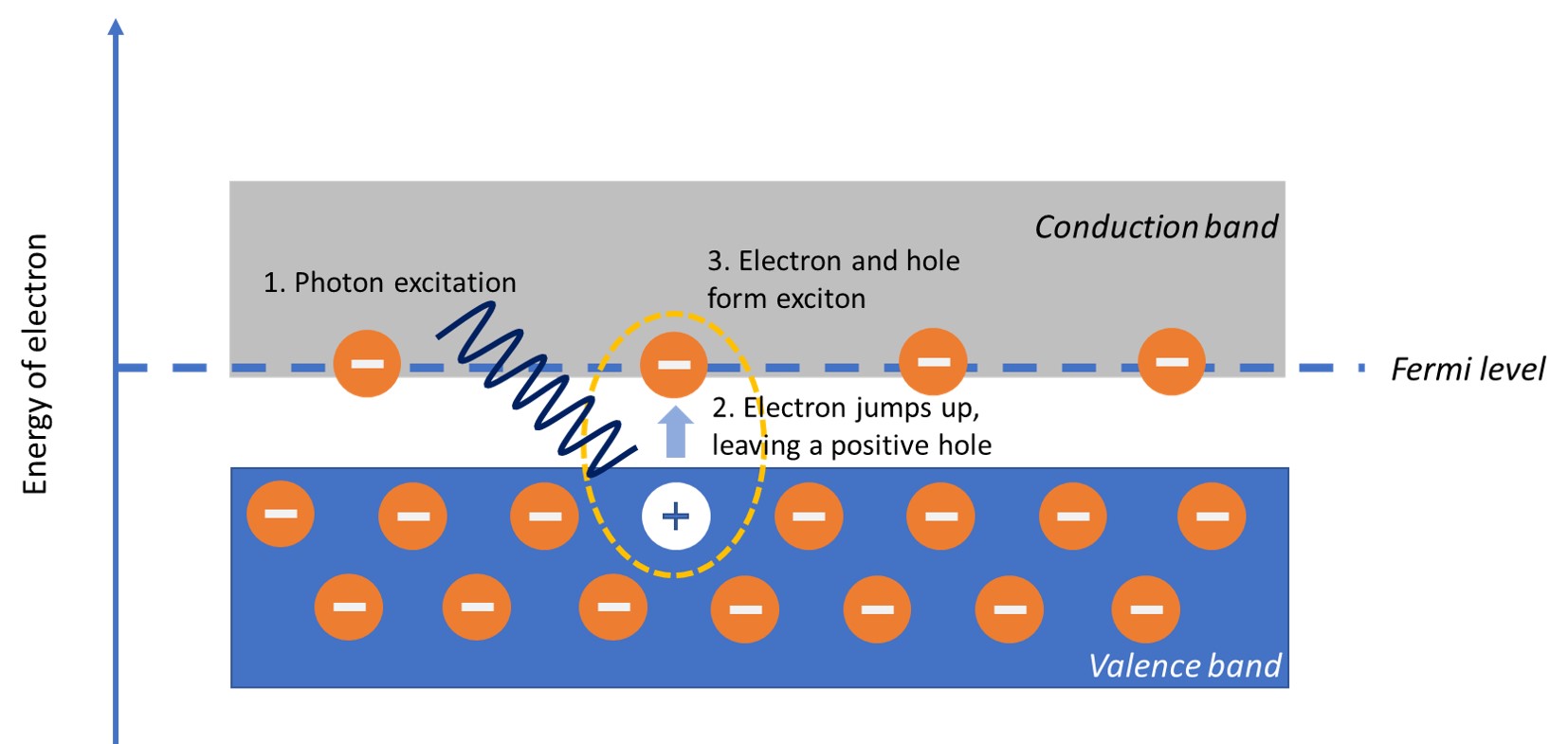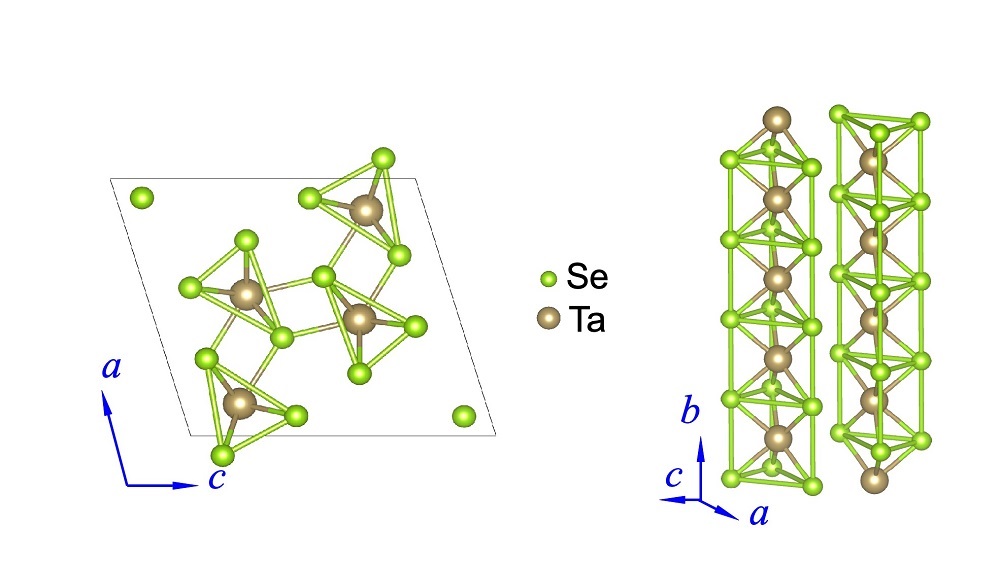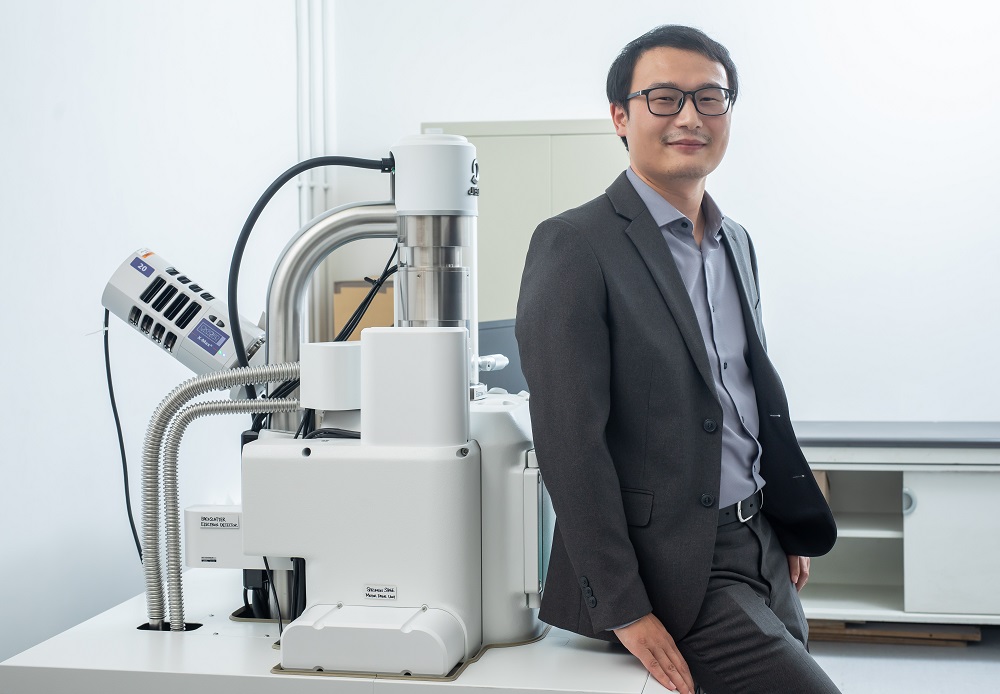Fast-moving excitons observed for first time in metal, unlocking potential to speed up digital communication
In a world first, a team co-led by a physicist at City University of Hong Kong (CityU) has discovered that excitons—excited electrons bound to empty electron “holes”—can exist stably and travel rapidly through metal. Because excitons can be generated by energy from light and have no electrical charge, this discovery makes them potential candidates as a higher-speed alternative to free electrons as a carrier of digital information.
Excitons form when certain materials absorb energy from light to excite electrons, the negatively charged particles in atoms. The electrons are boosted to a higher energy level to leave positively charged spaces or “holes” in their original position. Owing to electrostatic attraction, a hole and an excited electron can pair up without recombining, forming an exciton that behaves like an uncharged particle (Fig 1).

“When an exciton’s electron recombines with a hole, energy is emitted as light, which could be harnessed for data transfer in the optoelectronics industry,” says team co-leader Dr Ma Junzhang, Assistant Professor in the CityU Department of Physics. “Excitons would be better data carriers than free electrons, whose negative charge slows them down, but excitons are very unstable, especially in metals. In fact, before our study, stable and mobile excitons were thought to be impossible in metals.”
The researchers succeeded in generating and detecting excitons in metal because of a combination of optimal test conditions and unique characteristics of their chosen material, tantalum triselenide, TaSe3. The research was headed by CityU and the Paul Scherrer Institute (PSI) in Switzerland, and the results were published in Nature Materials in an article titled “Multiple mobile excitons manifested as sidebands in quasi-one-dimensional metallic TaSe3”. The joint corresponding authors of the paper were Dr Ma Junzhang, and Professor Shi Ming and Dr Markus Müller from PSI. Collaborators included researchers from Rutgers University, Princeton University, Stanford University, and other institutions.
Importance of excitons as robust information carriers
The exciton is expected to play an important role in the future of information transmission thanks to both its charge neutrality and ability to move through a solid. Unlike negatively charged free electrons, excitons are unhindered by external electric fields, magnetic fields, and defects in the surrounding material.
“Excitons are potentially more robust and efficient information carriers than free conducting electrons, which transmit our information today,” says Dr Ma. “Even though excitons have been found in semiconductors and have been used to design field-effect transistors, phototransistors, light-emitting diodes, and solar cells in the laboratory, almost all experimentally observed excitons move very slowly, greatly limiting their efficiency in information transfer.”
Most importantly, excitons have remained elusive in metals. They are rarely reported for metals because of the abundance of free conducting electrons. These free electrons dampen the attraction between any singular hole and electron (known as screening), thus suppressing the formation of excitons. Any excitons that are able to form in metals are too unstable for practical use and even experimental observation.
Conventional optical experiments to detect excitons also have severe technical limitations.
But now, by using a powerful and sensitive technique called angle-resolved photoemission spectroscopy (or ARPES) to analyse the electronic band structure in a crystalline solid with special properties (TaSe3), the CityU and PSI team have made a breakthrough in the study of excitons in metals. Namely, they have discovered the existence of robust excitons travelling at high speed through a metal.
Experimental design

In their quest to find stable excitons in metals, the research team turned to the metallic compound TaSe3 for its low density of free conducting electrons and hence poor screening effect, to maximise the chance of exciton formation. In addition, TaSe3 consists of stacked layers of parallel triangular chains of selenium prisms enclosing tantalum metal atoms (Fig 2). It thus behaves like a one-dimensional metal, allowing excitons to travel along a specific straight path, because the one-dimensional chains are like high-speed train tracks.
The team predicted that the so-called quasi-one-dimensionality of TaSe3 would enhance the attraction between the electrons and holes within excitons, yet could allow the two charged components to be in different layers and chains. In that way, the holes and electrons would be separated from each other and would keep from mixing, thus preventing the annihilation of excitons and extending their lifetime.

By using ARPES, the researchers systematically recorded the electronic structure of TaSe3. The instrument shone a narrow beam of high-energy light onto the sample to excite electrons so that they escaped into a vacuum, while activating excitons in the TaSe3 (Fig 3). The ARPES equipment analysed the angles and energy of the escaped electrons to reveal information on the presence, structure, and motion of excitons.
New theoretical model of mobile excitons
After ruling out other plausible mechanisms, the team concluded that all the observed phenomena in their ARPES experiments could be well explained by the presence of multiple stable subtypes of mobile excitons moving at high velocity along one dimension. Dr Müller, in collaboration with theoretical physicist Professor Christopher Mudry from PSI, then developed a complete theoretical model of mobile excitons in one-dimensional metals. The theoretical model demonstrated good agreement with the results of the experiments.

An important feature of the model is an explanation for the multiple subtypes of excitons detected (Fig 4). The team concluded that excitons in TaSe3 possess at least three different internal structures depending on two variables. The first variable is whether a hole binds to one electron (forming an exciton) or two electrons (forming a trion). The second variable is whether the holes and electrons belong to and travel along the same TaSe3 chain (resulting in intrachain excitons) or neighbouring chains (resulting in interchain excitons and interchain trions).
The findings are significant, as it was previously thought that stable excitons could not exist within metals. The study has also demonstrated for the first time that excitons can move rapidly within a metal along a specific direction, which would in practice increase data transfer efficiency. Moreover, the team has experimentally shown that certain exciton properties in TaSe3 can be manipulated and controlled by surface modification (electron doping) with potassium vapour.
The findings and the new theoretical model not only provide a roadmap for the further study of excitons, especially in metals, but also promote their application as high-speed information carriers in conductor devices in the future.

“Our work now paves the way to generating high-velocity but tunable mobile excitons in metals,” says Dr Ma. “This new field and direction will advance research and development in computing and communication devices that transmit optoelectronic information.”
This work was mainly supported by CityU, the National Natural Science Foundation of China, the Swiss National Science Foundation, and the Sino-Swiss Science and Technology Cooperation.
Source: Ma, J., Nie, S., Gui, X. et al. Multiple mobile excitons manifested as sidebands in quasi-one-dimensional metallic TaSe3. Nat. Mater. (2022). https://doi.org/10.1038/s41563-022-01201-9
